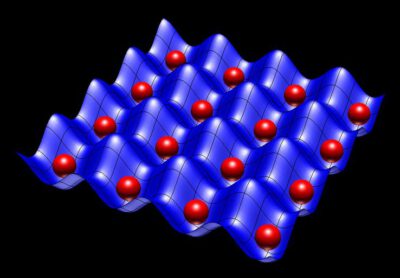Quantum computing is a field that leverages the principles of quantum mechanics to perform computations. Unlike classical computers, which store and process information using bits that represent either a 0 or a 1, quantum computers use quantum bits, or qubits, which can represent both 0 and 1 simultaneously due to a property known as superposition. This allows quantum computers to perform certain calculations much faster than classical computers for specific problem types.
The basic unit of information in a quantum computer is the qubit. Qubits can exist in a superposition of states, meaning they can represent both 0 and 1 simultaneously. This is achieved by using physical systems that exhibit quantum properties, such as the spin of an electron or the polarization of a photon. The two most common implementations of qubits are based on superconducting circuits and trapped ions, but there are other approaches as well.
Quantum computing architecture can vary depending on the physical implementation of qubits. . Superconducting qubits: In this architecture, qubits are implemented using superconducting circuits. These circuits consist of loops of superconducting material interrupted by Josephson junctions. The qubits are manipulated by applying microwave pulses and controlling the electromagnetic fields inside the circuits. Qubits are typically organised into a two-dimensional grid, where each qubit is connected to its neighbouring qubits. These connections allow for the execution of quantum gates, which are the fundamental building blocks of quantum algorithms. Trapped ion qubits: This architecture involves using individual ions as qubits. Ions are trapped using electromagnetic fields, and their internal energy levels are used to represent the qubit states. Laser beams manipulate the state of the ions by inducing transitions between their energy levels. To create connections between ions, quantum information can be transferred using entanglement. Additionally, ions can be arranged in a linear chain or a two-dimensional array.
Regardless of the architecture, quantum computers require precise control over qubits to perform operations, maintain coherence, and minimise errors. They also need methods for initialising qubits, executing quantum gates, and measuring the final results. Quantum algorithms, such as Shor’s algorithm for factorisation or Grover’s algorithm for search, are designed to take advantage of the unique properties of qubits and provide computational speedups in specific problem domains.
Shor’s algorithm for factorisation and Grover’s algorithm for search are two well-known quantum algorithms that demonstrate the potential quantum computers for specific tasks. Here’s an overview of how these algorithms work:
Shor’s algorithm is a quantum algorithm that efficiently factors large numbers. This has significant implications for cryptography because many encryption algorithms rely on the difficulty of factoring large numbers. Here are the main steps of Shor’s algorithm:
- Step 1: Choose an integer to be factored, let’s call it N.
- Step 2: Select a random number ‘a’ that is less than N and relatively prime to N (i.e., they have no common factors other than 1).
- Step 3: Use quantum algorithms and techniques to find the period, r, of the function f(x) = a^x mod N. This step is the most critical and uses quantum properties like superposition and interference to perform computations on multiple values simultaneously.
- Step 4: Analyse the obtained period, r, using classical algorithms to find the factors of N. If the period is even and a^(r/2) mod N is not -1 or 1 (modulo N), then the factors of N can be obtained using the greatest common divisor.
Shor’s algorithm demonstrates that a quantum computer can factor large numbers exponentially faster than the best-known classical algorithms, which rely on the sheer computational power of classical computers. This has significant implications for breaking certain cryptographic schemes, such as RSA.
Grover’s algorithm is a quantum algorithm that provides a quadratic speedup over classical algorithms for searching an unsorted database. The algorithm finds a unique element, or elements, in an unstructured database with N entries in roughly O(√N) time. Here are the main steps of Grover’s algorithm:
- Step 1: Encode the search space as quantum states using qubits, with each entry representing a basis state. This creates a superposition of all possible entries.
- Step 2: Apply an oracle, which acts as a function that marks the target item(s) with a negative phase (or flips their amplitudes). The oracle identifies the solution(s) we want to find.
- Step 3: Apply a quantum operator called the Grover diffusion operator, which amplifies the amplitudes of the marked elements and suppresses the others.
- Step 4: Repeat the second and third steps √N times (approximately) to amplify the probability of measuring the marked elements.
- Step 5: Perform a measurement, which collapses the state into one or more solutions with high probability.
Grover’s algorithm provides a speedup for searching unsorted databases compared to classical algorithms, which generally require O(N) time complexity. However, it’s important to note that Grover’s algorithm does not provide exponential speedup like Shor’s algorithm.
Both Shor’s algorithm and Grover’s algorithm demonstrate the potential power of quantum computing for specific problem domains, highlighting the advantages of leveraging quantum properties such as superposition and interference to perform computations more efficiently than classical computers.
Quantum computing is still an evolving field, and practical, large-scale quantum computers are not yet available. Researchers and engineers are actively working on overcoming various challenges, such as improving qubit coherence and reducing errors, to make quantum computing a more robust and scalable technology.

